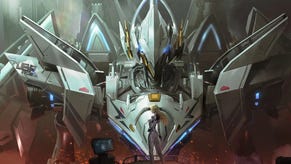Giving Life to a League of Legends Champion: Inside Riot Games' Animation Process
Mike talks to Riot Games senior animator Rory Alderton about animating League of Legends' host of champions.
This article first appeared on USgamer, a partner publication of VG247. Some content, such as this article, has been migrated to VG247 for posterity after USgamer's closure - but it has not been edited or further vetted by the VG247 team.
Starting tomorrow, millions of fans will watch the next round of the League of Legends 2014 World Championship in Seoul, Korea. They'll watch highly skilled players trade blows live on screens worldwide. Every Overload by Ryze, every Flay or Death Sentence by Thresh, every Teemo death.
Now imagine those games without any animation. Imagine static digital minatures trading damage with no punches, slashes, explosions, or dodges. Animation gives weight and life to the champions in League of Legends. It provides context and feedback to players, allowing them to feel the timing of each move, instead of looking at cooldowns. Animation is the taunts and joke poses that make each LoL champion feel real.
Rory Alderton (@RiotLamz) is a senior animator at Riot Games and he's responsible for making sure that each champion looks and feels unique. He joined Riot Games in 2013 after eight years at Runescape developer Jagex Games Studio. Alderton got his start years ago, animating mods for Rockstar's Max Payne, and now he's the one making sure that League of Legends' look remains unique and iconic in a market of growing competitors. He's also the lead animator behind two of the game's champions: Yasuo and Braum. I spoke to Alderton about the animation process at Riot Games and the challenge of adding new champions to the game's existing roster.
USgamer: What does your average workday involve?
So usually I'll come in and since I work on the champion team, we tend to do quite a lot to develop champions. We always want to try avoiding making a champion that's too similar to one we already have. At the moment, I'm in the Exploration Phase for a champion, so I get to try out a lot of things which don't necessarily make it into the final game. I can come in, do a few poses.
We work in small pods: an animator, a modeler, a rigger, and a concept artist. The concept artist is usually the ultimate vision holder of champion, so I can make a few poses, show them some ideas for certain things, get some feedback, and iterate a little bit more. We have four teams: the Visual Update Team, the Champion Team, the Skins Team, and the [Update for Summoner's Rift] Team, which supports the new map that we announced a while back. So we have four different animation teams and we all collaborate.
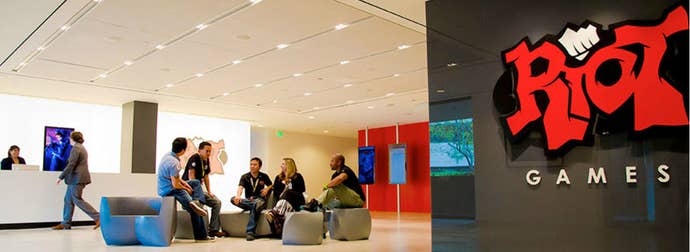
Sometimes I'll try to get an animation done by the end of the day so I can sell an idea to the rest of the pod. If I'm pretty adamant that I have a great idea, I'll spend all day working on that to see if it can gain some traction amongst the pod. If it does, then we have more direction for that new champion. That's the goal daily.
USgamer: What's your process behind creating and animating a champion?
First up, you get the concept, which is an idea thrown down on a piece of paper; it gives us a vision to look toward. After the concept phase, it goes to the modeler who will make a proxy model; we call it a proxy model because it's a temp model that they can quickly make, sometimes in a day. That gets sent to the rigger, who puts the skeletal infrastructure in that model. It can then go to the animator after that. That's how the pipeline works, it's those four main disciplines. The modelers usually do the textures and things like that.
"Sometimes champions are in the concept phase for years."
Once the proxy model gets to me, then I can really start doing animations without the final assets so there's not a traffic jam. I'll come in daily and get the new model; it's constantly updated from that side. It allows me to keep working from the start of the cycle instead of waiting until the very end.
USgamer: How long does the average champion creation process take, from beginning to end?
It's hard to put an exact timeline on it, because you can be working on a champion and someone will feel that something is just not right. We never like to release thing until we're absolutely happy with them. A gut-check would be around four months. It all depends on the complexity of that champion. Sometimes champions are in the ideation and concept phase for years; ideas have been floating around the office a long time before they actually get to that phase.

USgamer: You're now creating champions in a field full of MOBAs, like Dota 2, Infinite Crisis, and near-MOBA Heroes of the Storm. How do you retain the LoL magic and keep Riot above the pack?
"We don't use any motion capture. It's about creating a house style the caters to all of these things in a manga-oriented style."
One of my main job roles is to make sure that we're ever-evolving our house style. It's very manga-based, squash-and-stretch, lots of snapping motions, satisfying actions, and loud poses. It's a style of animation we really try to make our own. It's fully hand-keyed, we don't use any motion capture. One day I could be animating a robot and the next I could be animating a snake. It's about creating a house style the caters to all of these things in a manga-oriented style; we're always inspired by comics and things like that. Those great still shots of an action, we always try to incorporate that into our animations, so it's really readable.
Especially when you're animating in a top-down view, it important to feel those motions because things like weight are a lot harder to sell when the camera is looking down from the top instead of the character's level. You need to really exaggerate up-and-down motions to sell weight and things like that.
USgamer: Are there any competitors whose animations you particularly enjoy?
Pretty much every game. I like the stuff Dota 2 does for example; it's a different style from us, but their animations are very fluid and easy on the eye. We have a game room here and there are always brand-new games. Destiny is another great game. Even though it's a first-person shooter, it's still visually pleasing. I'm a big fan of Mario games as well.

We're really inspired by Street Fighter, that's one of our biggest inspirations. It's a game that really has loud poses. Since it has frames and not fluid animation - especially the traditional 2D fighting games - you really get those core poses. Inspirations from all across the board.
USgamer: What goes into making an iconic character or animation?
One of the main animations I spend a lot of time trying to tackle on a champion is usually the Ultimate. It's the big payoff moment when you're playing a champion. It's that animation that has to have the WOW factor.
It took me a number of iterations to do Yasuo's Ultimate. It had to be an airborne three-hit combo and it had to happen in one second. The challenge behind that was making something that was readable, happened in one second, and was satisfying. Yasuo's Ultimate can only be done when a target is somewhat airborne, so for the first iteration I tried doing an underneath attack, where he would try to kick them up from beneath by slicing upwards. We found that got lost in the game. When you're playing the game, a lot of particles and things are going off on the screen. It was losing that WOW factor.
So I did another iteration where I did a three-hit airborne combo. He moved from side-to-side and did three really clean hit poses. It was definitely one that took a lot of time to do, but it was great when we finally saw it working. Every time I see it today, I say "That was worth the investment."
USgamer: Yasuo and Braum are two very different characters. How does the character concept change the process of animating them?
With Yasuo, since he's a ninja and he has a very light sense to him, he's very agile and flexible. He's a very high-attacking champion, so we knew we needed moves that flowed well together. There's an immediate sense of combat when you're animating a champion like Yasuo. He has a very agile and pose-heavy animation suite. You don't want to make someone like that too hefty. Whereas when I'm animating Braum, he's got this huge vault door with a tremendous amount of weight. You want to convey that weight. He's strong, so he can throw that thing around.
USgamer: What tools do you have available to make the iterative animation process easier?
We have a great tech team who does a phenomenal job. They support us with great rigs and scripts for our in-house tools. We use Maya mainly for our 3D animation, so we collaborated with them and developed an amazing piece of technology we call "Jiggle Tech".
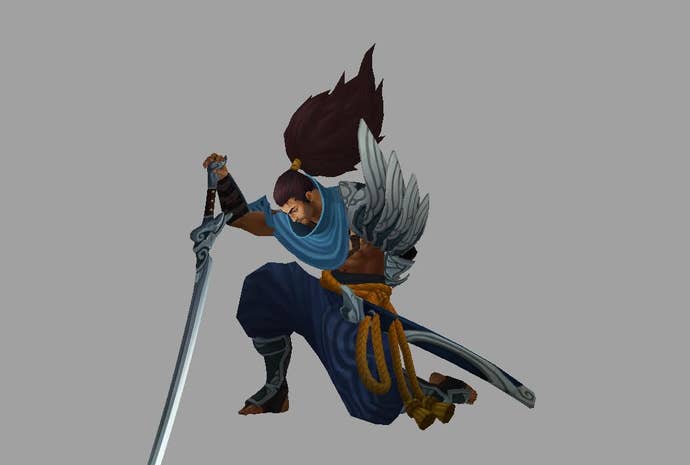
"Going forward we're going to include [Jiggle Tech] in all of our champions."
A prime example of its use is on Yasuo: he's got his hair and a rope around his waist. When I was animating, I never animated those until the very end. I would get the poses and body motions right, then with the press of a button I could set some values on the hair and rope and they would dynamically animate themselves. It saved a lot of time during iteration processes; if I wanted to tweak a pose or add a change in direction, it saves me going in and re-animating that hair. I could simulate it in real-time, so I wouldn't have to bake the animation and watch it, which is a really time-consuming process.
All those extremities that contribute to the animation we can do with the touch of a button. Braum also benefited from that tech: he has a rope on his arm and a necklace. We didn't have to animate those by hand. We're really trying to push that on future champions. It's easy on the eye when you see things like fluid hair. Going forward, where appropriate, we're going to include that and build on that technology in all of our champions.
USgamer: What goes into the process of making a new champion that's not similar to what's been released?
It's a challenge we face every day. There's so many people that collaborate to make champions. We get so many good ideas, but ultimately a lot of them are very similar to things that we have. We've always trying to innovate on gameplay.
If a great gameplay idea comes along and builds up some traction, then usually that's a sign that this could offer something new to players. The champion will get a rapid prototype, where we make some basic animations. We'll get a proxy model, try to get the size and shape right. Then we throw it in a playtest and see what happens. If it adds a new feel to the game, then it's like a snowball: it builds up momentum and by time it gets to the bottom, it's this huge thing.

USgamer: How often do you have to return to a champion to re-animate an attack?
Once it goes out live, we usually try to keep everything how it is unless it's one of our really old champions that clearly needs a visual upgrade. New attention on that champion will obviously lead to a few new assets being made and some tweaks in the design.
"When we release a Champion, we try and make sure the animation suite itself is iconic for the rest of its lifetime."
During a rework, all the animations are redone by the rework team. We do a full sweep, but we try to keep the essence of the Champion. If a Champion that's being redone has a really iconic run cycle, we try and keep that intact. There's a guideline with visual updates - keep what really worked and figure out what we can improve on - instead of making brand-new things.
We can always add new attacks with skins and things like that. With the new Yasuo skin, we added new attacks to it instead of using the old ones, because we thought that the newer attacks would suit that skin more. We can always add things like that to skins, but usually when we release a Champion, we try and make sure the animation suite itself is iconic and readable for the rest of its lifetime. If the [timing of an attack] changes, I can simply reduce the size of an animation instead of having to re-animate the whole thing. When people are playing eSports, if we start changing animations too much, certain things on the battlefield may lose their identity. People are so accustomed to Yasuo's Ultimate, so it's iconic to them. We try and keep those things as much as possible.
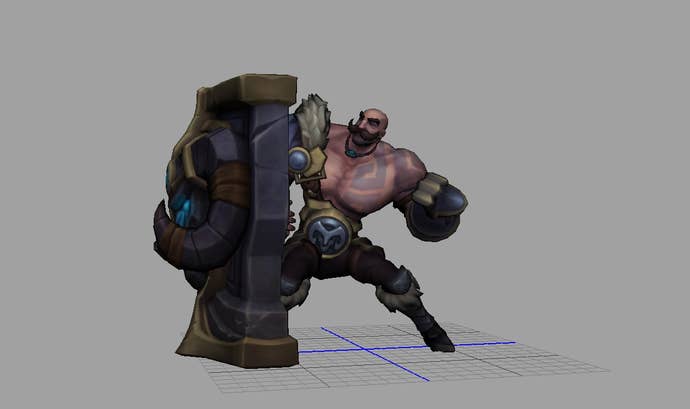

USgamer: Are there any small animations that you're proud of that you think most players miss?
One of the things we did with Yasuo that's innovative is his sheathing tech. It really creates his identity. Every time you do an attack, he'll sheath his sword afterwards and there's a nice transition. You can run for awhile and stop, and that animation will transition smoothly. He won't stop sheathing if you attack mid-run. It's intertwined among all his animations.
One of the sacrifices with that was we couldn't have what we call an idle-in: if you're running and you stop, Yasuo doesn't do a rest animation where he transitions into his idle. That was one of consequences of the sheathing tech. It cost use an animation here and there.
Ultimately, I would've like to have found a way to incorporate an idle-in, because they add character. Especially on someone like Zed. If you run on Zed and then stop, you see his idle pose shift, where his blades will adjust. It really sells that "ninja" look. With Yasuo, we couldn't quite implement that because of the sheathing, but it was a sacrifice we were willing to make.
There are a few things I would've done different with Braum. I would've like to have had the poro a bit more involved. As soon as we released the Trials of the Poro trailer (seen above), we got this massive reaction and everyone really took to the poros. It was so late in the development process that we were like, "maybe we should've included that a bit more," but we didn't want to saturate Braum with the poro. If we could've incorporated the poro in a few more of his animations, but really sell Braum, that might've been nice. I did manage to put it in both of his jokes, and that actually happened after the trailer came out.
Out of all 121 champions, who was the most complex champion to animate?
I'd have to say Vel'Koz. On his tentacle one of the main things we used was something called cascade blending. It's where you blend the joint chain from one joint to another, so you get this really wavy motion when the champion stops. That took a lot of time to get down and nail correctly.
In-game, I'm still not a hundred percent happy with some of the blends that occur. If you go from one skill to another or if you stop running all of a sudden, you might see a slight hitch on the tentacle blends. Since there were so many, it was important for us to try to get a flow. The result was great and I am proud of it, but it might've been a little ahead of its time in terms of what we could actually achieve. If we could re-do Vel'Koz now, look out for those tentacles being a lot smoother.




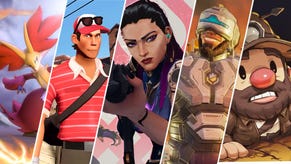
.png?width=291&height=164&fit=crop&quality=80&format=jpg&auto=webp)
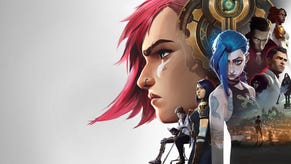
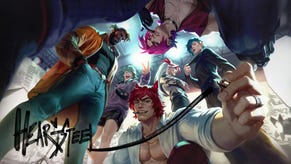


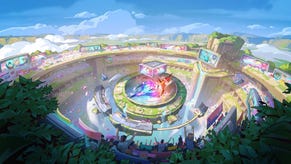

_ddwYK80.png?width=291&height=164&fit=crop&quality=80&format=jpg&auto=webp)





